This story originally appeared in Rider magazine’s “Favorite Ride” column.
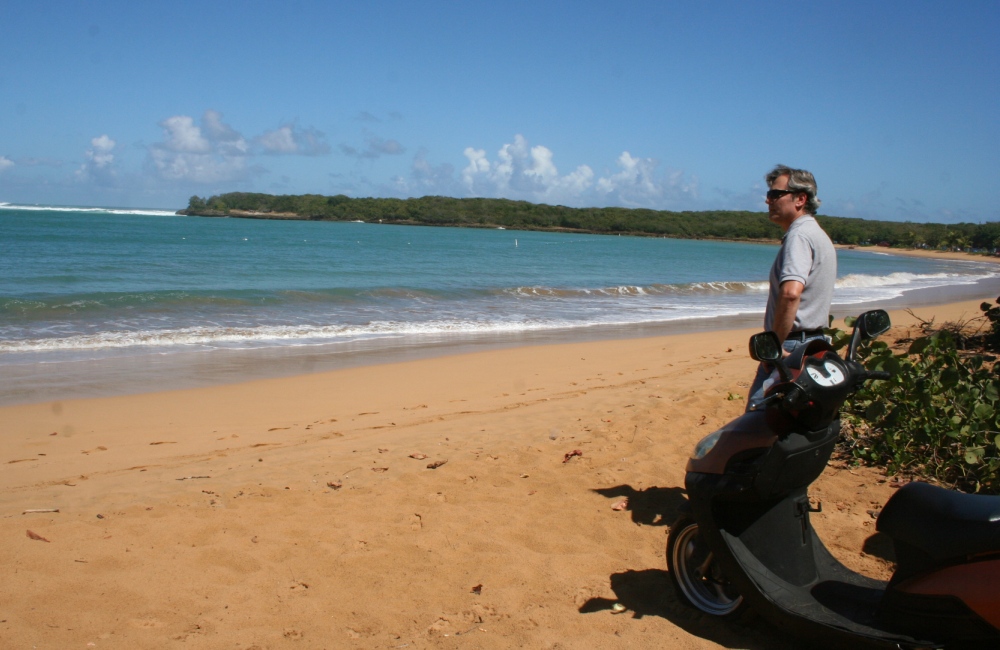
Homely scooter, beautiful beach.
Sometimes you just need to take a ride. Even if circumstances aren’t optimal. Even if there are obstacles to overcome. Even if those around you react with, “You want to do what?”
That’s how I came to find myself on Puerto Rico Route 191, a narrow road of tight switchbacks that climbs 2,000 feet in just a few miles, wringing the throttle on a copper-colored, Chinese-built scooter of questionable lineage and well-worn suspension. The scooter’s engine whirred in pain, the plastic housing in front of my knees rattled loudly with each bump, the front end threatened head-shake despite the modest speeds, but really, none of it mattered. Because sometimes you just need to take a ride.
I return to Puerto Rico, where I lived for eight years in my younger days, at least once a year, and every time I find that the place that rented motorcycles the previous year has gone out of business. The rental office near where we were staying could offer me a car or truck, but their motorcycle fleet had been liquidated. Nobody, it seems, wants to rent a motorcycle and try their luck in Puerto Rico traffic. Nobody but me, that is.
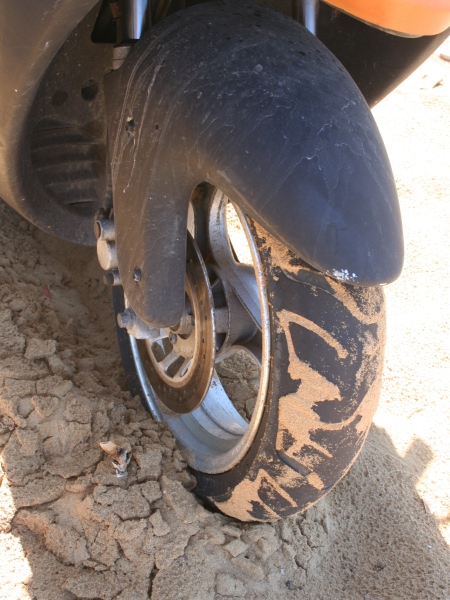
Anybody got any knobbies for this thing?
Fortunately, just down the street is a tour company with a couple of Chinese scooters for rent and the owner, Hector, soon has me signed up. A once-over shows that everything works except the horn, so Hector squirts some WD-40 into the switch housing, vigorously pumping the button. It still doesn’t work, but he assures me, “Just keep pushing it and it will work.” That doesn’t sound to me like a good strategy in an emergency, but an hour later I find out he’s right. Once loosened up, the horn works fine.
The San Juan area’s tangle of streets is known for “tapones,” the local name for traffic jams. Fortunately, I know the escape route. Leaving the Isla Verde tourism zone, I ride east on Route 187, avoiding the highway and choosing 187’s slower-paced charms. It slips past the backside of the airport, crosses a little bridge by the old yacht club, and suddenly I’m surrounded by an oceanside cluster of delicious-smelling restaurants serving up seafood and every kind of Puerto Rican fritter you can dream of, from alcapurrias to bacalao. Food is cooked over wood fires (the aromas are part of the marketing plan) and the businesses have the open-air, shack-like feel that perfectly fits a day at the beach. I’m only a few miles from the hotels, the Pizza Hut and Wendy’s of Isla Verde Avenue, but suddenly it feels like I really am in the Caribbean, not Fort Lauderdale.
The next several miles of Route 187 thread a line between the ocean and a swampy, protected natural area called Piñones. These are beaches as nature made them, unadorned. Nobody’s going to offer you a lounge chair and something from the bar. Locals pack the family and a cooler and come for the day, relaxing in the shade of sea grape trees. Most tourists are several miles west in the city.
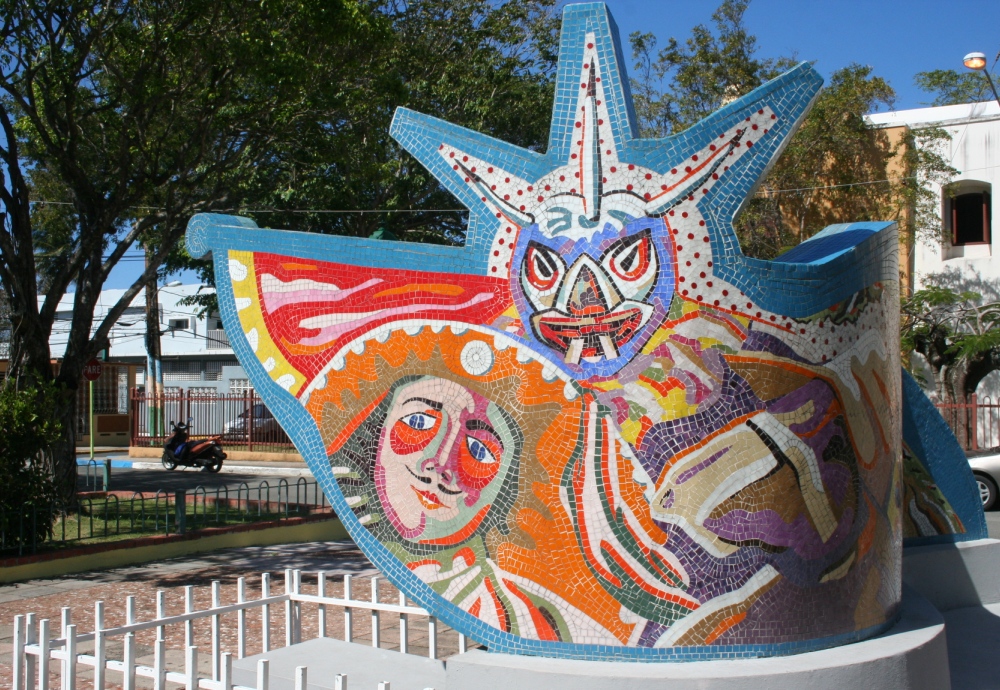
Murals provide the public art in the central plaza of Loíza. It wasn’t hard to find a parking spot for the scooter.
Route 187 crosses the Río Grande de Loiza (on an island 35 miles wide, rivers have time to get only so big, but this is the largest) and I sputter into the town of Loíza. The people of Puerto Rico are a beautiful centuries-old mix of European and African blood, with a little of the indigenous Taino genetic material mixed in, but Loíza is known as the town where the African heritage rules. Loíza is famous for its annual Santiago Apóstol Festival, featuring a music-filled parade that’s known for the dancing characters wearing traditional brightly colored and hideous masks who try to scare onlookers. It’s much quieter the day I pass through. Three untethered horses halt traffic as they slowly clop across the main street to sample the grass in a vacant lot.
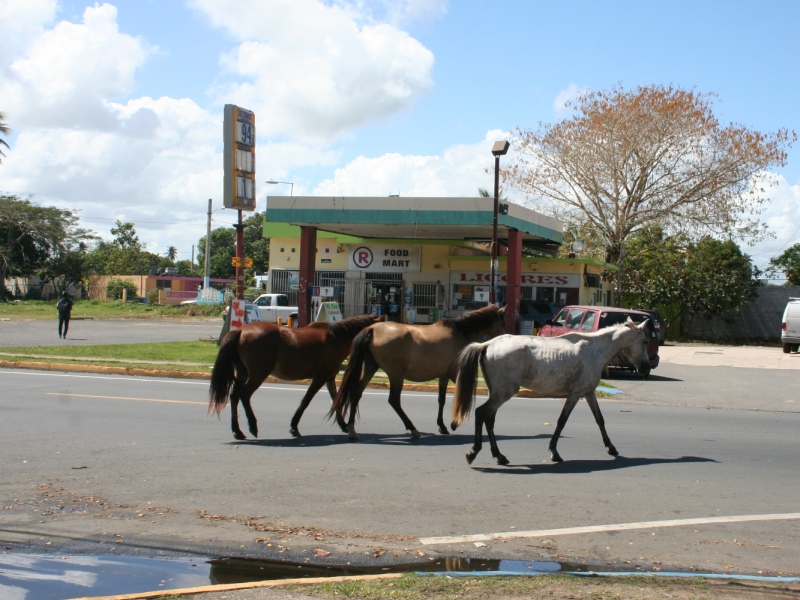
In the sleepy town of Loíza, horses wandered across the street, unbothered by traffic.
Past the town of Río Grande, I face the scooter’s first challenge: an unavoidable few miles on four-lane Highway 3. It’s a 55 mph zone, which means everyone drives either 45 mph or 75 mph, in keeping with Puerto Rico tradition. I have no idea what speed the scooter is producing because the speedometer needle is now flinging itself around the dial in spastic abandon. I do know I’m getting passed more than I’m passing.
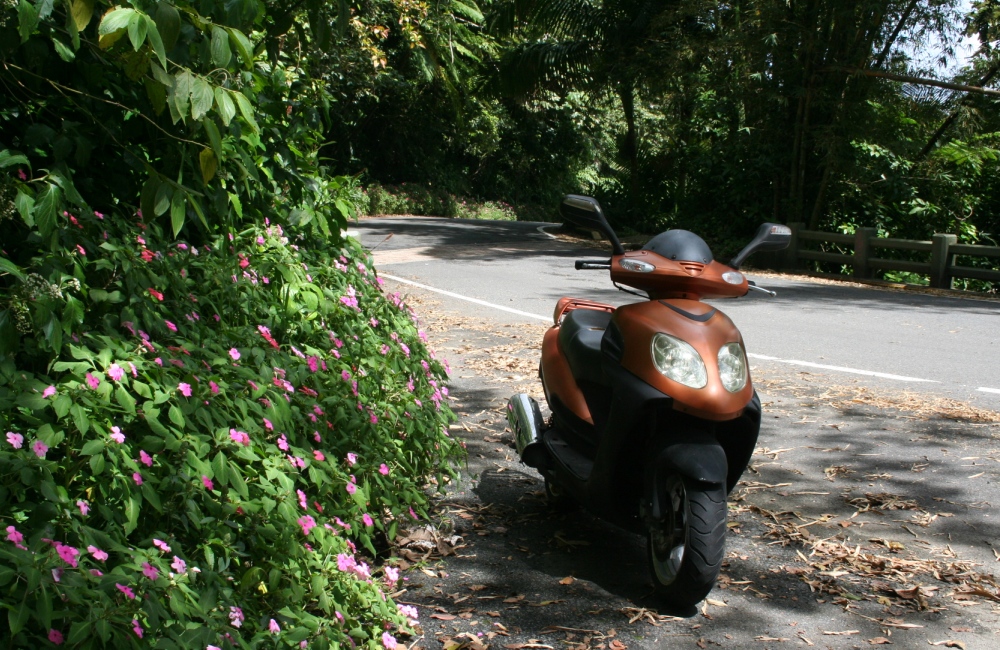
The scooter labored up the mountainside through the rainforest to the flanks of El Yunque.
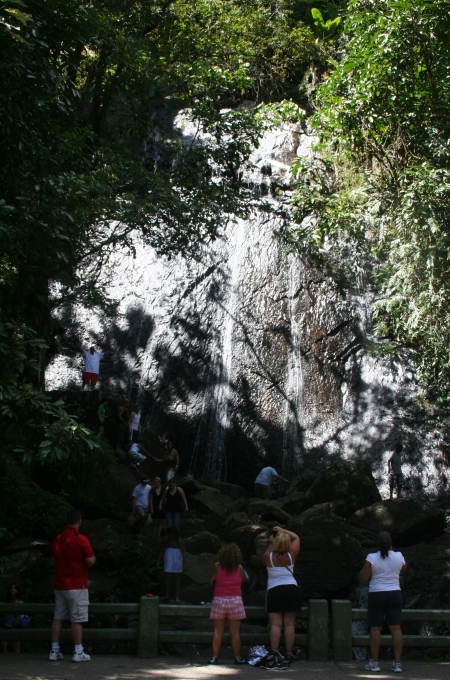
Tourists enjoy La Coca Falls in the Caribbean National Forest, better known as El Yunque.
But it’s only a few miles until I turn onto Route 191, which snakes up the Luquillo Mountains into the Caribbean National Forest, more commonly known as El Yunque. It’s no surprise El Yunque is the most popular tourism destination in Puerto Rico after Old San Juan. It’s conveniently close to the city and is the only tropical rainforest in the U.S National Park system, so families with kids or vacationers on a tight schedule can experience a rainforest without need for a passport or mounting a major expedition. Tumbling streams plunge past as the scooter struggles to drag me up the steep slope. Still, the hairpins are so tight that I’m struggling less than the minivan in front of me, so eventually the driver waves me past with an encouraging “¡Pásale muchacho!” Truth is, if I weren’t wearing a full-face helmet with a tinted faceshield, he’d see I’m way past muchacho age, but I can understand that he’d assume only the young and foolish would be trekking to El Yunque on a battered scooter.
I take time to enjoy the views from the Yokahu observation tower, 1,575 feet above sea level but just halfway up the mountain. Students on a field trip flirt and swarm like a flock of parrots in their school uniforms. I stop at La Coca Falls (everyone does) for a photo. But eventually I put the scooter to the test on the downhill slope and head back toward the city. The front brake squeals like a four-year-old girl playing hide-and-seek. The rear brake doesn’t do much at all. But the scooter gets me back to Isla Verde, where I casually discard it.
Sure, the nameless scooter is kind of loose in the front end, slow, and rattles a lot, but I can’t hate it. For one day it removed me from pedestrianism and it took me back to beautiful places. For that alone, I have to say, it was a favorite ride.
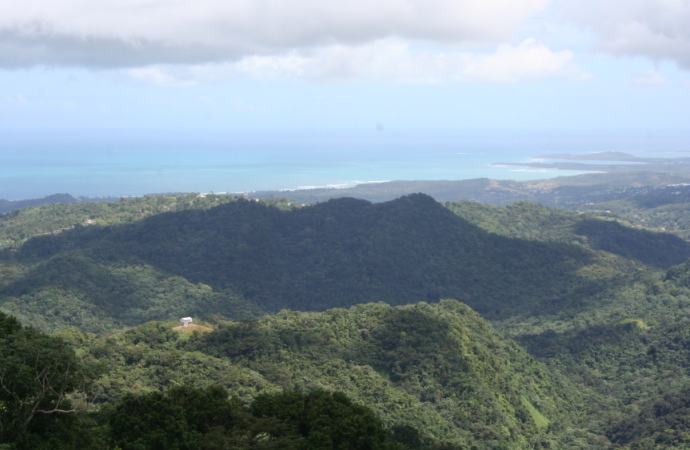
The view of the coast from halfway up the mountainside of El Yunque.
